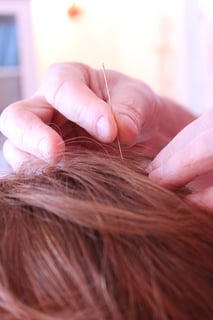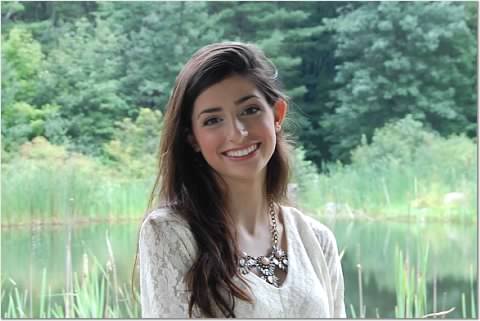Acupuncture and Autism
Acupuncture treatment may help your child’s autism symptoms. Acupuncture is a treatment where needles are inserted into the skin to target certain nerve or pressure points. Research has shown acupuncture to be an effective treatment for children with ASD in areas of verbal communication, social skills, behavioral concerns, food sensitivity, and noise sensitivity.
What is acupuncture?
Acupuncture is a form of alternative medicine that originated in China. Acupuncture is the strategic placement of needles in one’s body to target certain areas. Needles are inserted along systems of meridians, also known as acupuncture points or acupoints. The body has twelve meridians, which are channels of nerves that connect to different organs and parts of the body. Different acupoints correspond to distinct parts of the body. Acupuncture can alleviate symptoms of certain conditions and increase overall wellbeing. Acupoints are stimulated by needles or pressure. The thin needles are inserted into the skin ¼ to 1” in depth.
Acupuncture is a safe and holistic treatment. A session typically costs anywhere from $50 to $100 and insurance may cover treatments. During an acupuncture session, a licensed acupuncturist will consult with their patient about their concerns and mental and physical aspects they would like to focus on. The acupuncturist will take this information to inform where needles should be placed. The treatment takes from fifteen minutes to one hour. Multiple acupuncture treatments are recommended to see adequate results.
Acupuncture risk is low risk. An acupuncturist will wipe down the targeted spots with an alcohol preparatory pad and needles are single-use and disposable, so the practice is sterile. Insertion of the needles is not painful, although sometimes slight bruising, bleeding, or vague soreness may occur after the treatment.
What is scalp acupuncture?
Scalp acupuncture is acupuncture of the scalp where different parts of the head are targeted. Different meridians on the scalp correspond with different treatments. The forward part of the head treats symptoms related to the upper body. The center of the top of the head treats symptoms related to the lower body. The back and sides of the head treat symptoms related to motor skills, memory, and sensory sensations.
During scalp acupuncture, the needles must be stimulated, either by physical pulling/twisting, spinning, or electro-stimulation. Needles should be stimulated for approximately 2-3 minutes at a time, then still for 5-10 minutes.
How does scalp acupuncture aid children with autism?
 Studies found that scalp acupuncture was found to have a positive impact, from greatest measure of effectiveness to least, on verbal communication problems, social problems, behavioral problems, food selectivity, and noise sensitivity (Yaul, 2018).
Studies found that scalp acupuncture was found to have a positive impact, from greatest measure of effectiveness to least, on verbal communication problems, social problems, behavioral problems, food selectivity, and noise sensitivity (Yaul, 2018).
Scalp acupuncture may aid individuals with ASD by inserting acupuncture needles into the tissue of the scalp directly focusing on the neurons in the brain that relate to the impaired functions being focused on. These neurons are then physically stimulated through methods of twisting or electro-stimulation.
Studies report that the efficacy and positive outcome rate of scalp acupuncture on individuals with ASD is 97%. However, studies note that this rate decreases as children age and children with natal ASD show better results than children with regressive ASD.
In addition to symptoms of ASD, acupuncture may also aid symptoms of ADHD, food allergies or sensitivities, gastrointestinal problems, Tourette's Syndrome, and anxiety, among other things.
Is acupuncture right for your child?
Studies show that about 40% of children diagnosed with Autism Spectrum Disorder seek alternative, holistic practices, with acupuncture being the most common (Tang, 2019).
For children diagnosed with Autism Spectrum Disorder (ASD), acupuncture has been proven to be an effective treatment for verbal communication, social skills, behavioral concerns, food sensitivity, and noise sensitivity. Acupuncture has the potential to reduce these symptoms, but does not promise to eliminate them.
There are a few factors to consider when determining if acupuncture is a compatible treatment for your child. Acupuncture involves the insertion of needles into the skin, which makes some individuals squeamish, although the needles are not painful. When receiving acupuncture treatment, it is important that the individual stay still during the treatment. Treatments last anywhere from 15 minutes to 1 hour. This may be difficult for some children diagnosed with ASD. However, with scalp acupuncture, the child may have more freedom to move their body, arms, and legs if needed.
To see results from acupuncture, it is recommended that the individual receive treatment once a week for at least 6 to 8 weeks initially, and follow-ups as needed or recommended.
Acupuncture can be a costly treatment, although some insurances may cover the cost. Some acupuncture centers offer packages where multiple treatments may be purchased at once for a discounted price.
Immediately after acupuncture treatments, some individuals report feeling tired or experiencing an emotional release. It is important to note these feelings that might occur.
For children diagnosed with ASD, acupuncture is a natural, effective treatment in addressing symptoms a child may experience.
How to prepare for an acupuncture appointment:
- Research acupuncturists in your area. Some acupuncturists offer additional services during treatment, such as including music, essential oils, etc. Find an acupuncturist whose services would tend to your child’s needs the best.
- Check with your health insurance agency. Some health insurance companies will pay for your acupuncture. Some companies will require that you visit your child’s doctor to receive a recommendation to try acupuncture. If not, acupuncture treatments typically cost $50-$150 per session.
- Schedule the appointment. Remember that it is recommended that a child initially completes treatments once a week for 6-8 weeks then revisits for sessions as needed.
- Prepare your child. Receiving acupuncture treatments may be a new sensory experience for your child. Explaining the process verbally or through a social story is a great way to prepare your child. Bringing a favorite blanket, stuffed animal, or earbuds to listen to music may help make your child be more comfortable during their treatment.
- Track progress post-treatment. It takes multiple acupuncture sessions to see results. It is helpful to track behaviors that you are targeting with acupuncture before, during, and after all treatments to see if acupuncture is an effective choice for your child.
This article was based on the following research:
Mayo Clinic Staff. “Acupuncture.” Mayo Clinic, Mayo Foundation for Medical Education and Research, 14 Feb. 2018, www.mayoclinic.org/tests-procedures/acupuncture/about/pac-20392763.
Dorr, Christopher. “synopsis of scalp acupuncture.” Synopsis of Scalp Acupuncture, Dec. 2000, www.itmonline.org/arts/newscalp.htm.
Tang, Wangyi. “Acupuncture for autism found effective.” HealthCMi CEUs, 12 Feb. 2019, www.healthcmi.com/Acupuncture-Continuing-Education-News/1937-acupuncture-for-autism-found-effective.
Yaul, Chuen Heung, et al. “The Therapeutic Effect of Scalp Acupuncture on Natal Autism and Regressive Autism.” Chinese Medicine, BioMed Central, 15 June 2018, cmjournal.biomedcentral.com/articles/10.1186/s13020-018-0189-6.





